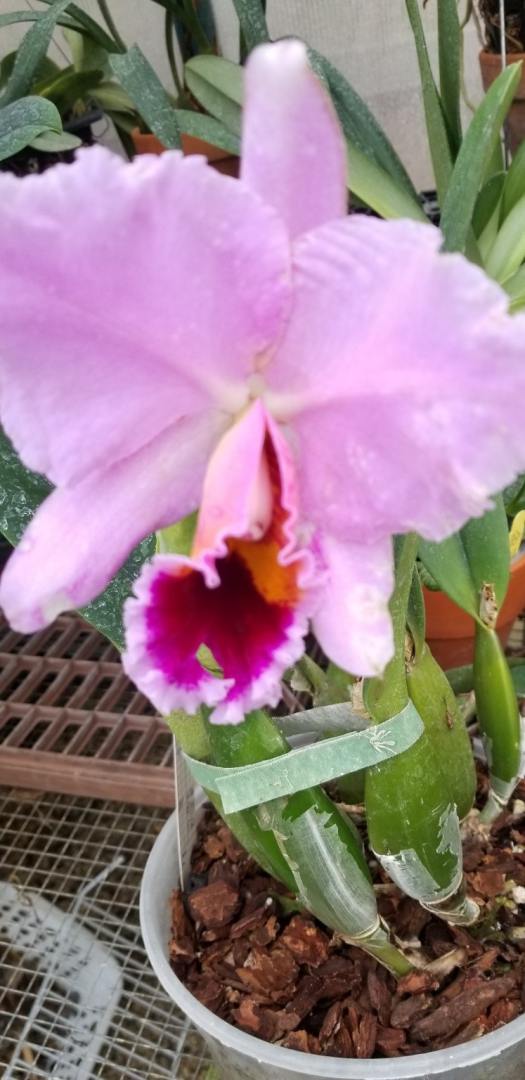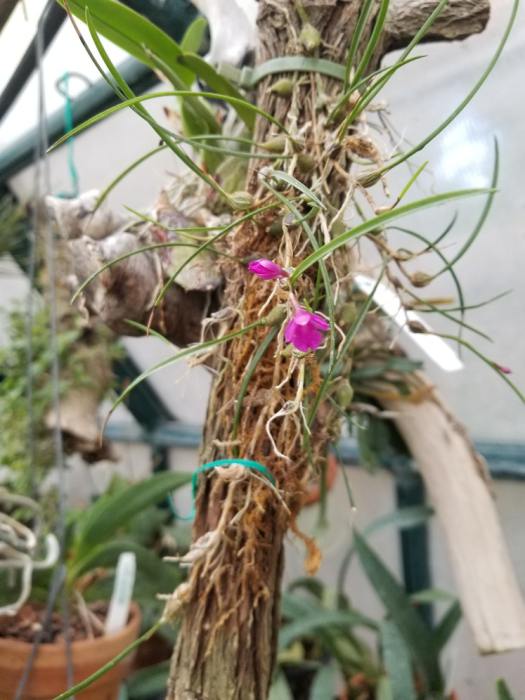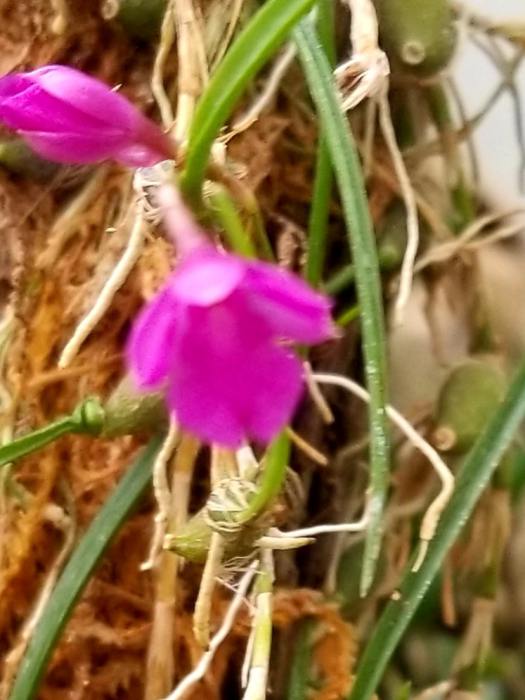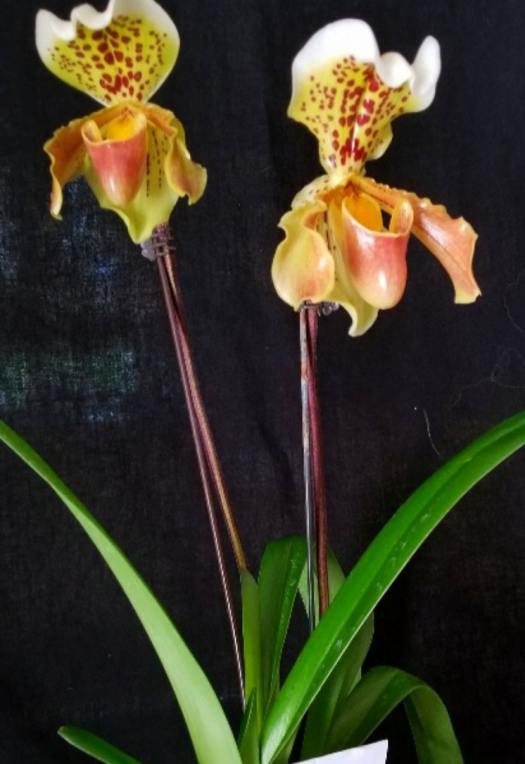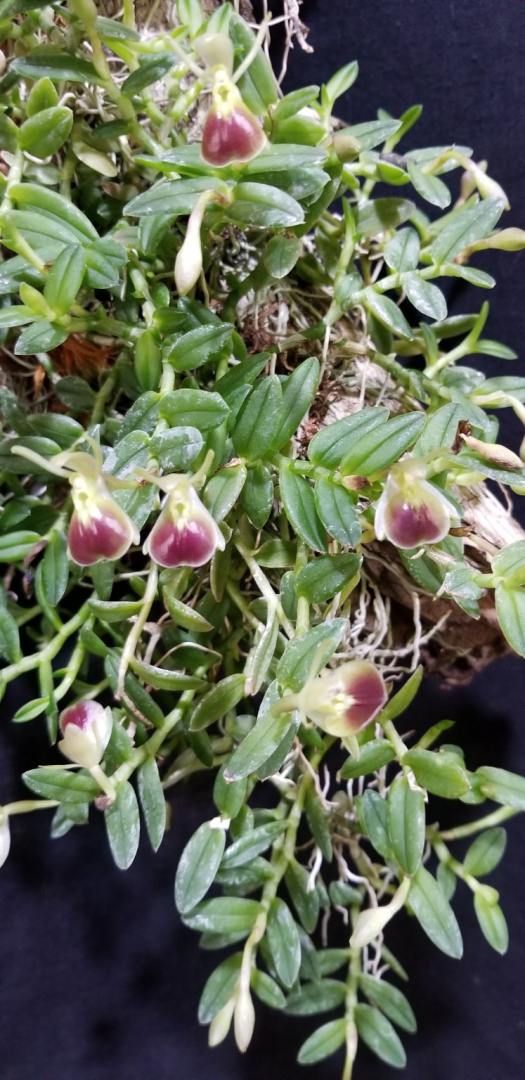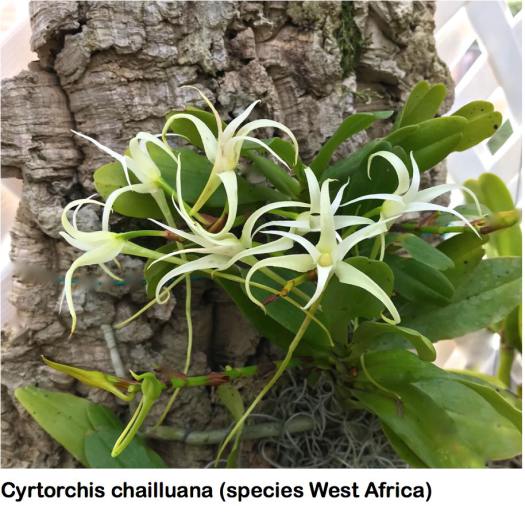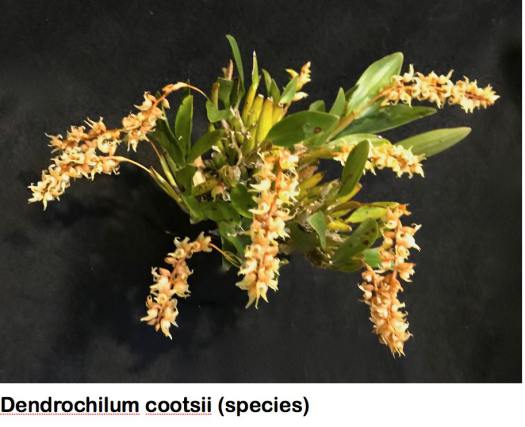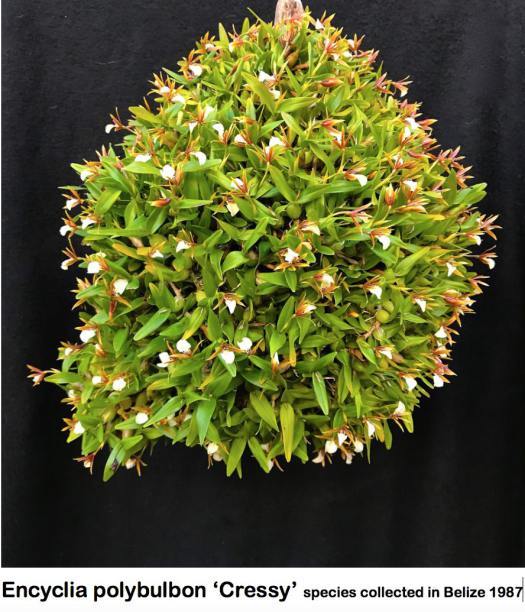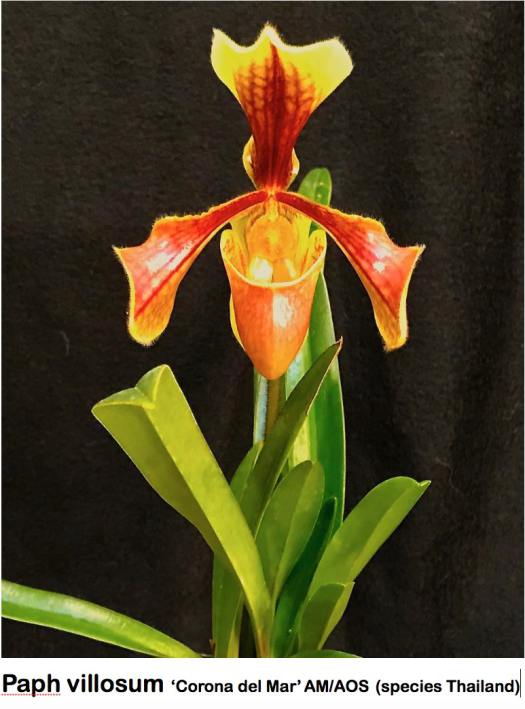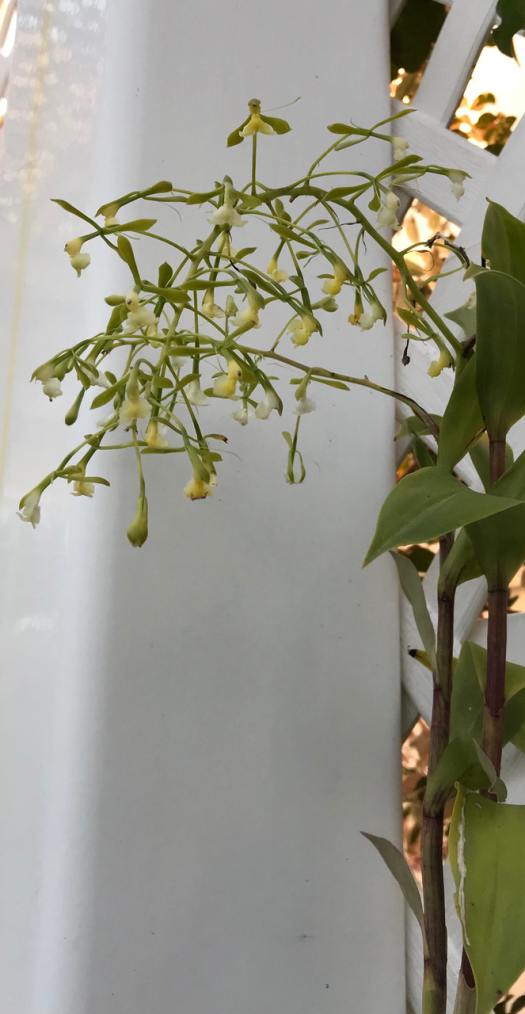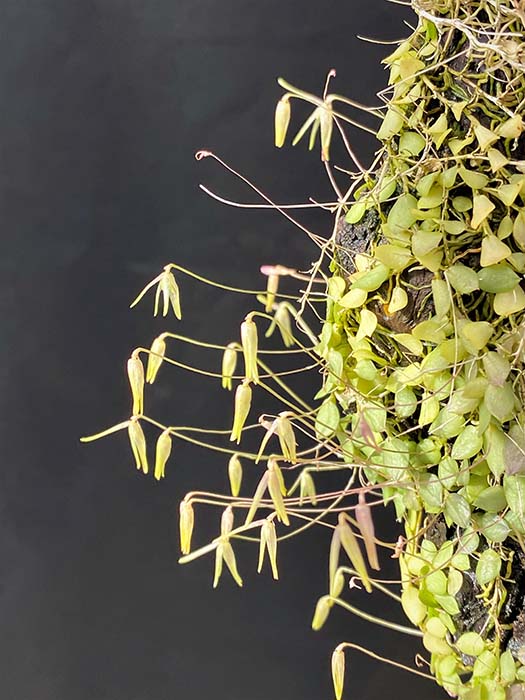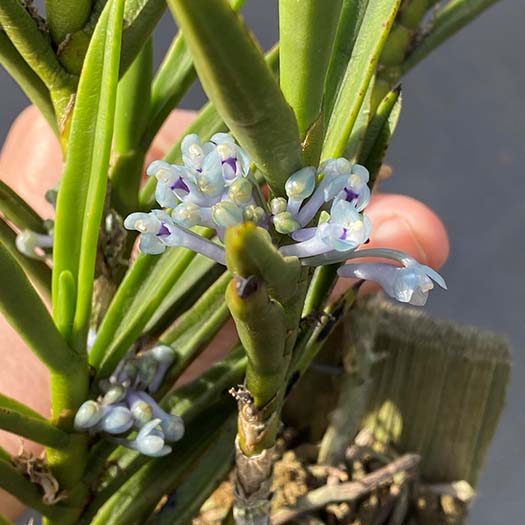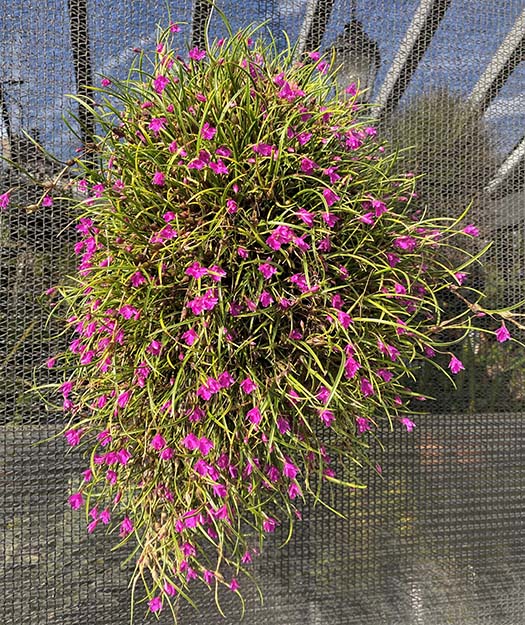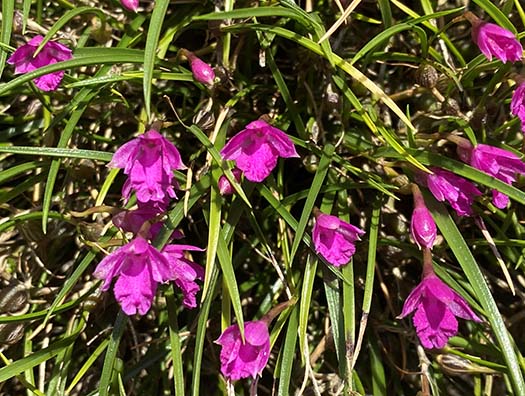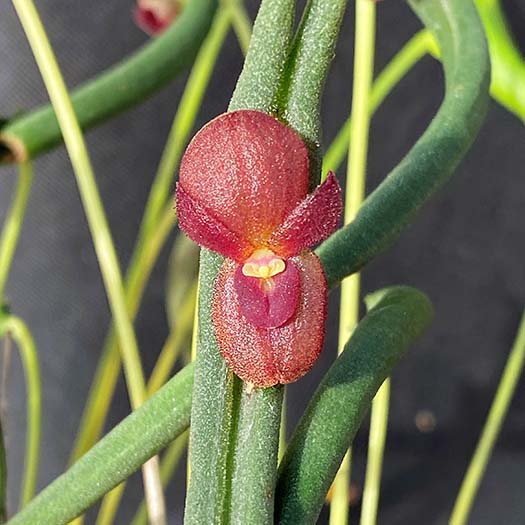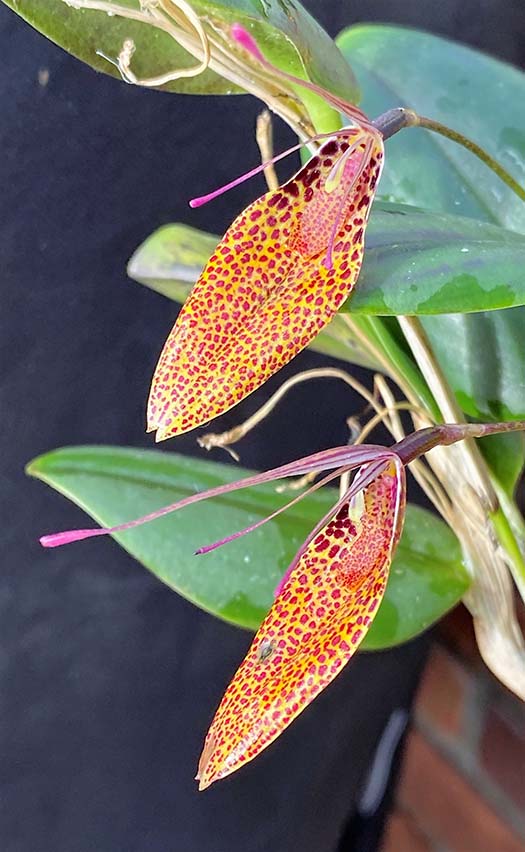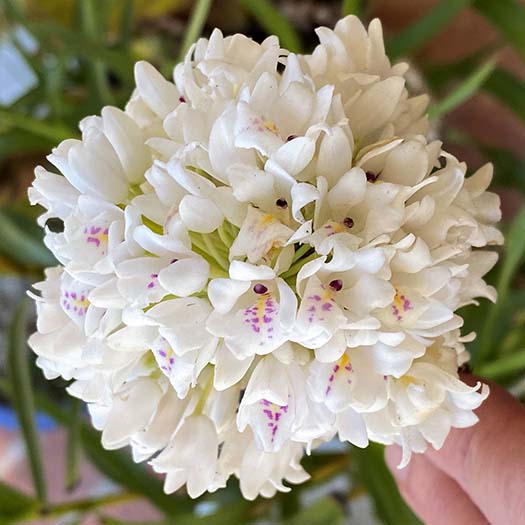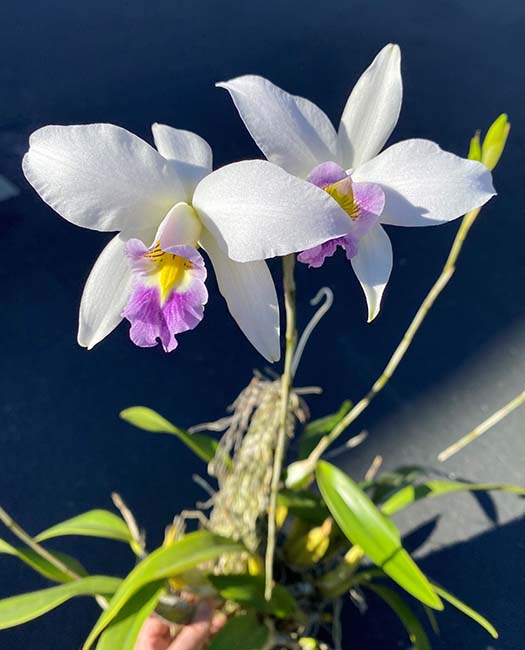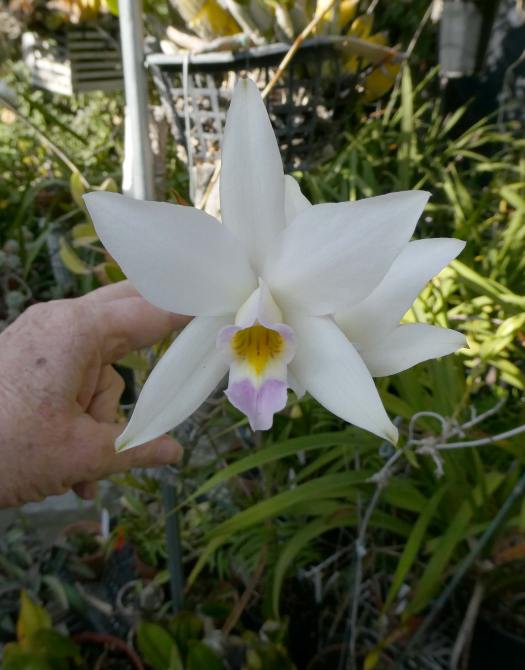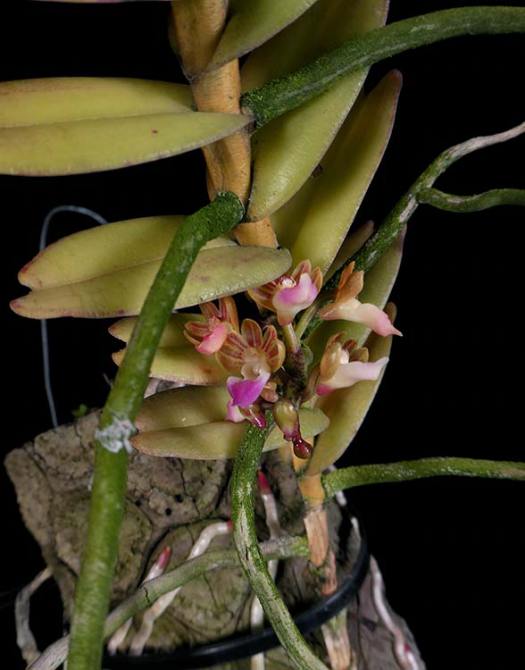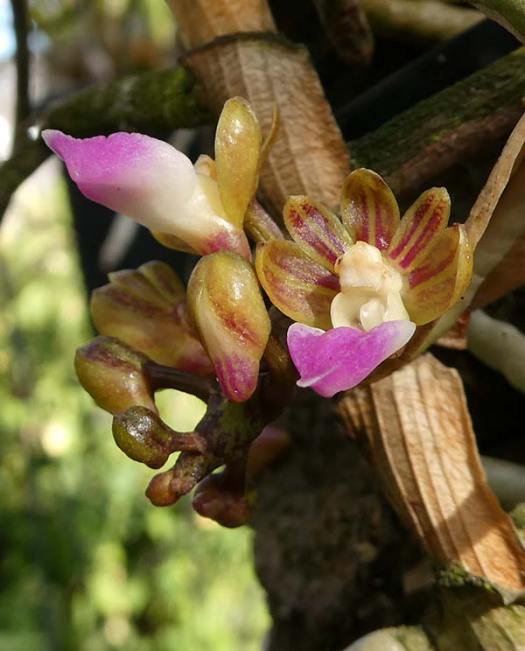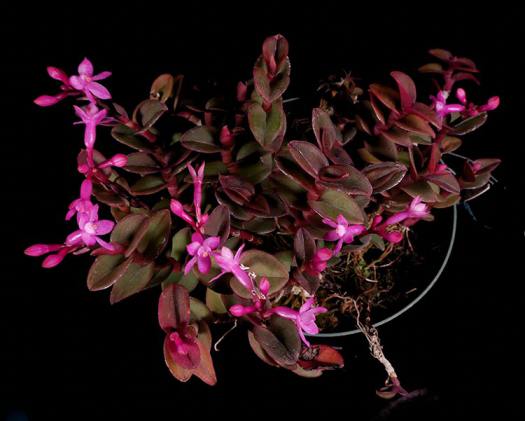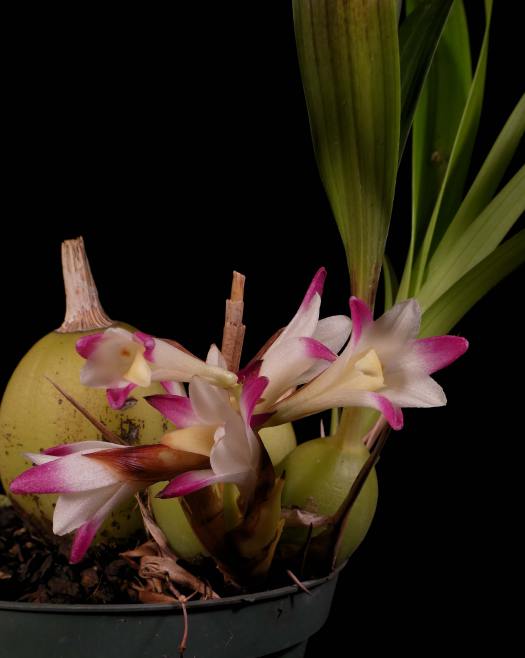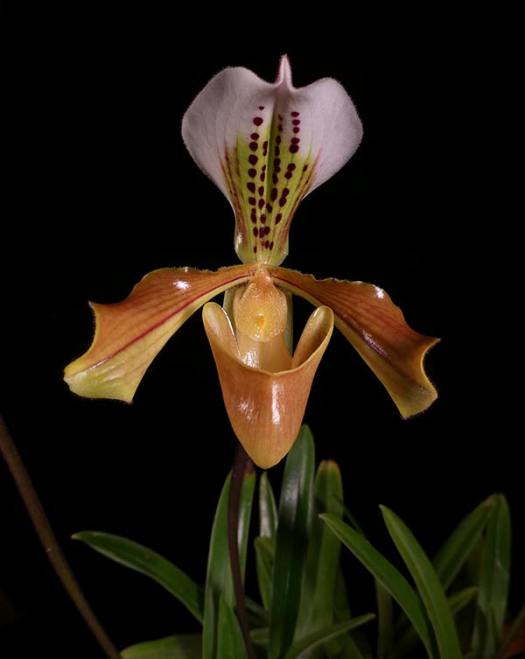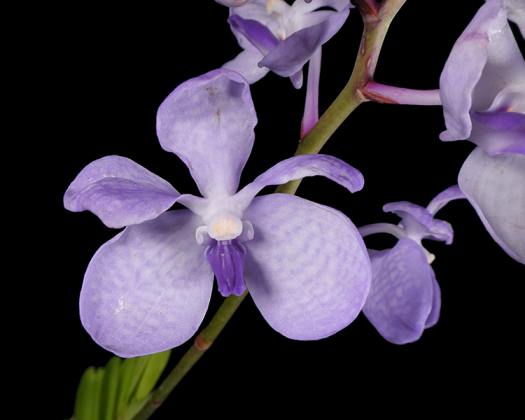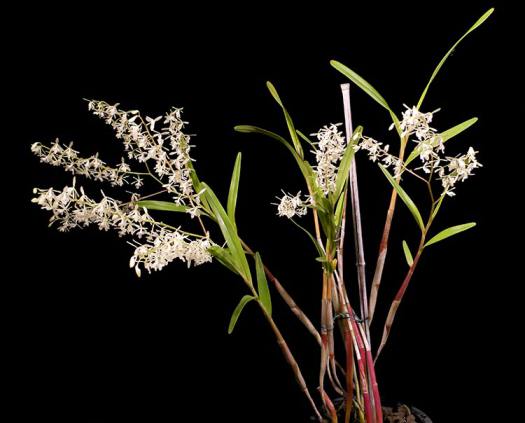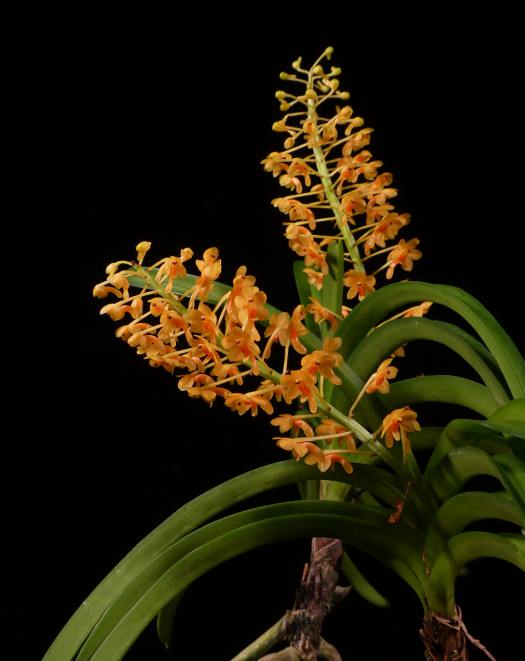January 2021
From Jan Hennessey:
|
|
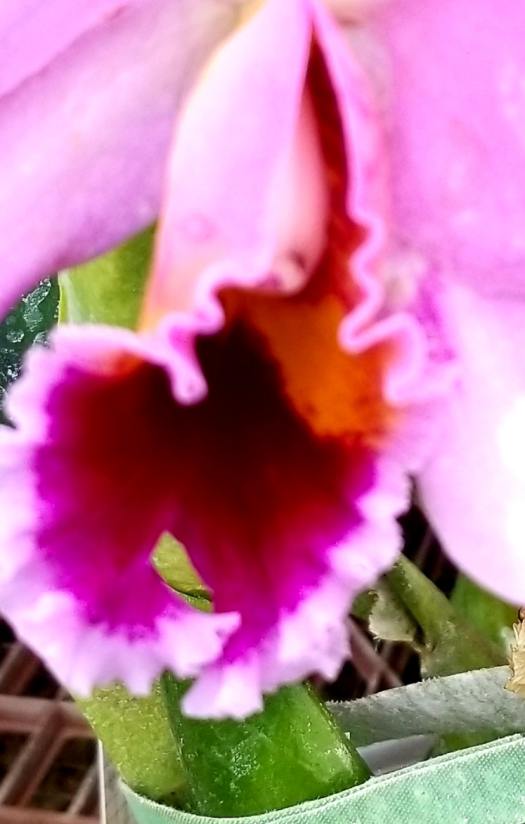 Cattleya percivalianaFound in the Venezuelan Andes although I've grown it in the greenhouse. Easy to grow here in OC. Known as the Christmas orchid, I love the lip colors. |
|
Isabelia pulchellaSo cute. Someday I'll have more flowers. Native of Brazil, loves the cool high humid mountains. It's a creeping orchid, likes strong breezes, no afternoon sun and prefers water once a day in summer with no winter rest. |
|
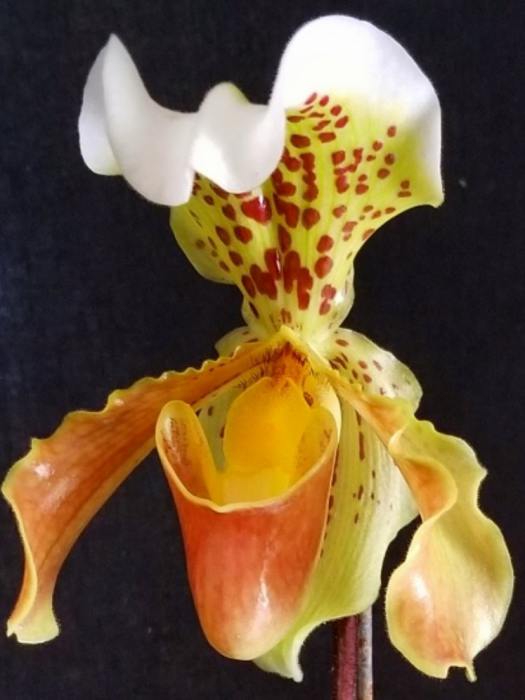
Paphiopedilum insigne 'Harefield Hall' AM/AOSA notable large clone, could be autotriploid so it is said. Ive had it for many, many years, was a prized possession of Ed Wise who gave me a division. |
|
Epidendrum porpax
Another creeper, succulent type,. I've had 2, the pot grown slowly died. Native to Columbia and Venezuela, one of my favorites. likes bright light, moist but dry in between watering. A favorite. |
|
From Lynn Wiand:All orchids grown outdoors, coastal southern California |
|
Epidendrum paniculatumSpecies from Ecuador, originally from Cal Orchid |
|
From Scott McGregor:All orchids grown outdoors, coastal southern California |
|
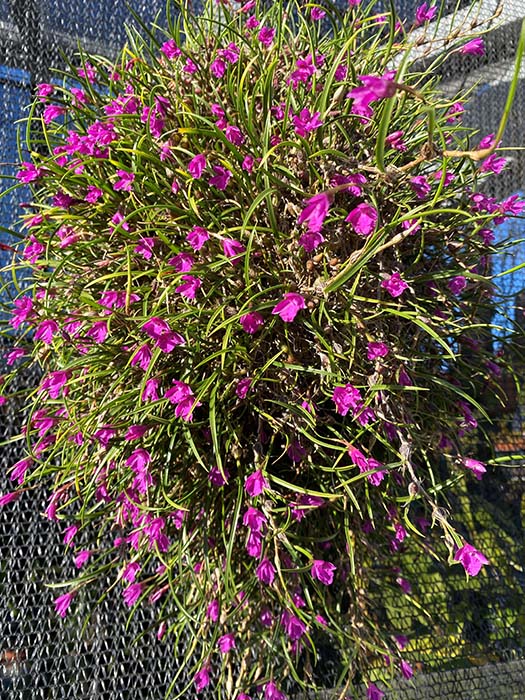
Isabelia (Neolauchea) pulchellaSpecimen from Brazil. Growing on just an upside-down 2” pot. |
|
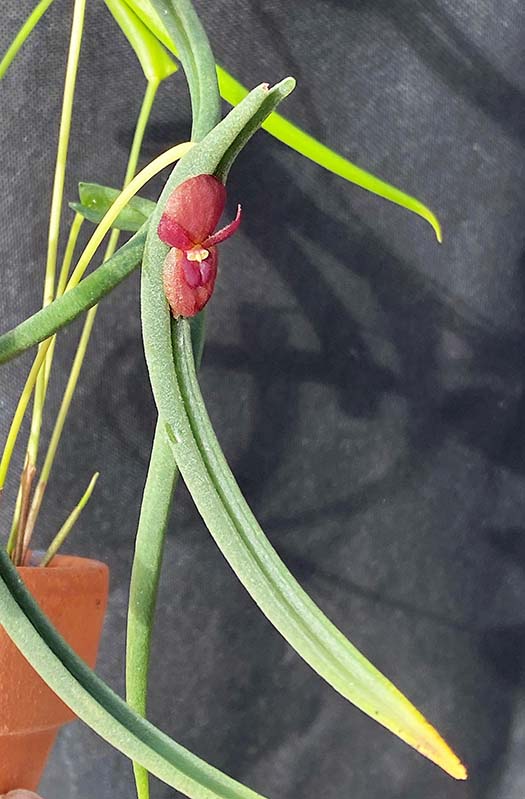 |
|
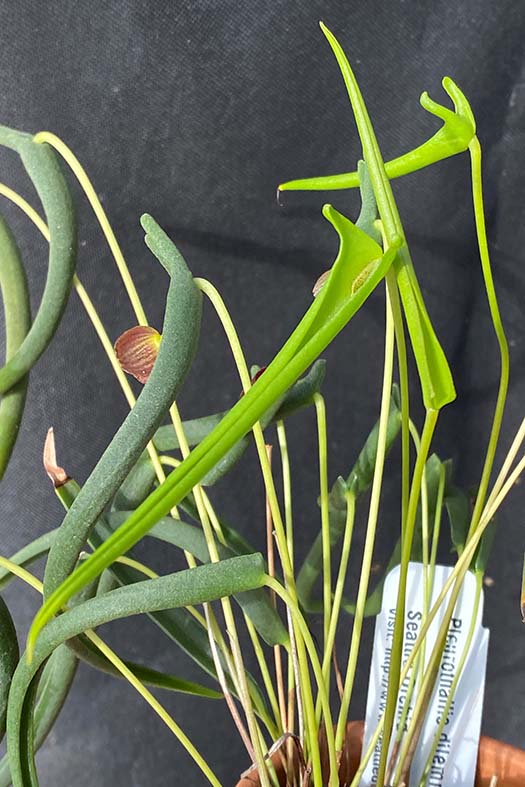 |
Pleurothallis dilemmaThis species is a “must” for any Pleurothallid fan. The flowers are unspectacular, but the plant has a unique look with horned green-bean leaves and a flower 2/3 up. Pics include a flower closeup, a side profile of the leaf/flower and a pic showing the maturity stages of the leaves. Fairly tolerant and easy to grow. |
Restrepia antennifera 'Type A'A large-flowered (for a Restrepia) species from Columbia, that comes in spotted and striped-lip variants. |
|
From Roberta Fox:
|
|
Outside in the Back Yard: |
|
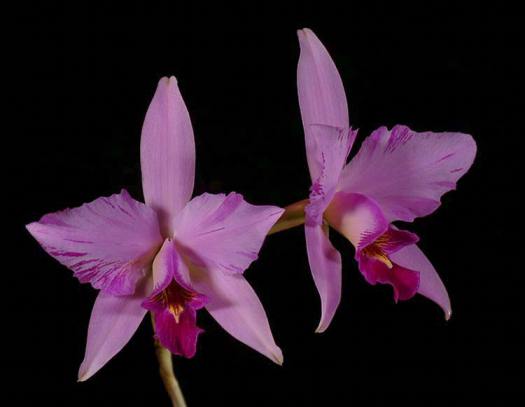 Laelia ancepsThis is turning out to be a great year for L. anceps. The season started in November, and looks like I'll have some opening through January. Above is L. anceps f. lineata 'Disciplinata'. To me the dark striping on the petals looks brushed on, with the "brush" pulling the color beyond the edge of the petals. To the right is L. anceps f. hillii, with crystalline white flowers and a delicate lavender patch on the lip and its side lobes. |
|
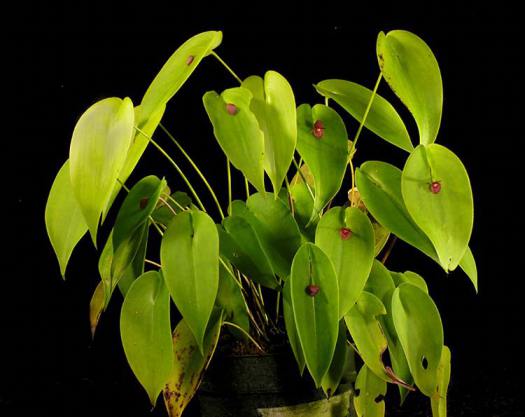 Pleurothalis cardiothallisA nice flush bloom. Individual flowers don't last long, but more are produced in sequence. |
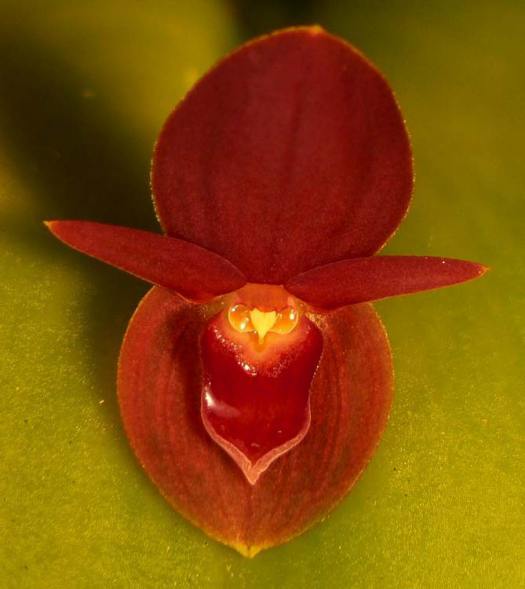 |
Pelatantheria insectiferaA $7.50 special that has grown quite well. It is a Vandaceous rambler, wrapping itself around a tree-fern log. I have found that it does best with fairly strong morning sun, then some shading through the rest of the day. |
|
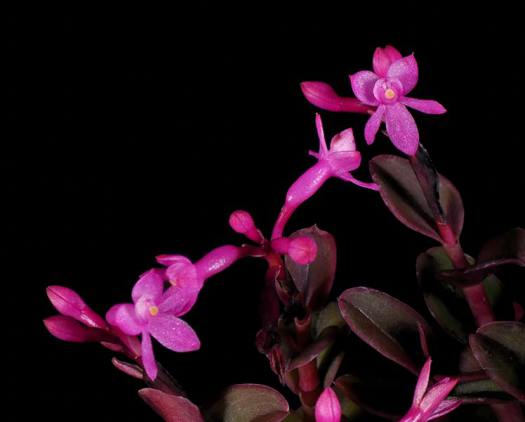 |
|
Epidendrum quisayanumSmall flowers but lots of them, and lots of color. After growths bloom, they die back, so over time the plant starts to look quite ragged. After a good cleanup, it took a couple of years to get back to a good density of blooming growths. |
|
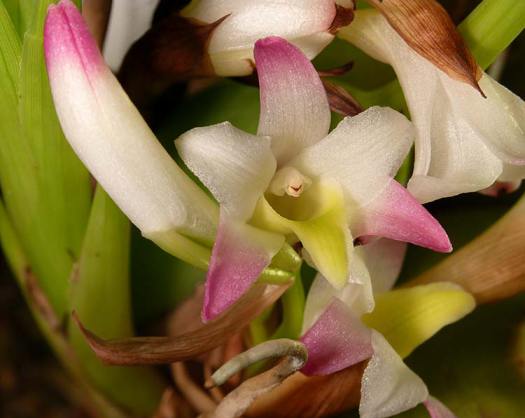 Coelia bellaNew growth develops at the outer edges of the plant, so keeping in the pot is somewhat of a challenge. |
|
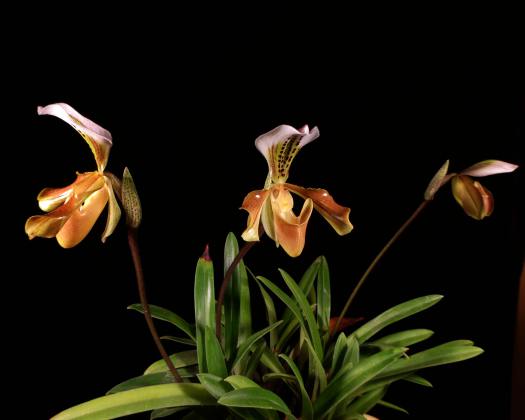
Paphiopedilum gratrixianum 'Old Mill'This particular plant has excellent vigor. The first time that I have had three flowers at the same time. |
|
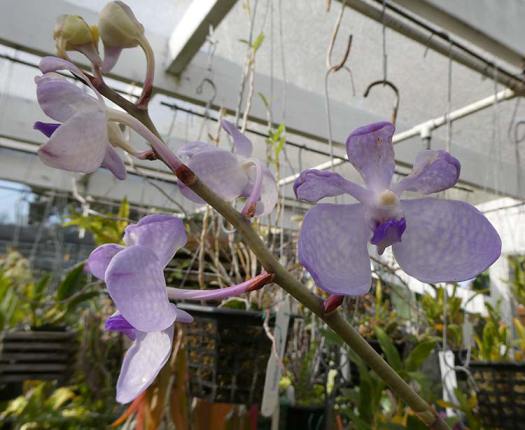 |
|
Vanda coeruleaThe species has a wide range of color, from almost white to very dark lavender. This one is in the middle of the color range. Ron Kaufmann has pointed out that the twist of the petals is characteristic of the species. If you have one with flat petals (classic Vanda form) it is likely a hybrid. The species is native to a wide range of southeast Asia, at elevations from about 900 to 1500 m, so has considerable cold tolerance. |
|
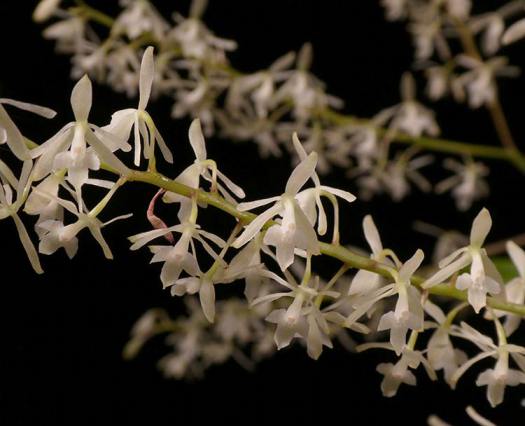 |
|
Epidendrum purumThe tag says "warm" but it actually comes from a wide range of elevations in Ecuador, Bolivia, Colombia and Peru. It does fine outside. The pristine white flowers are sweetly fragrant, especially in the afternoon and evening. |
|
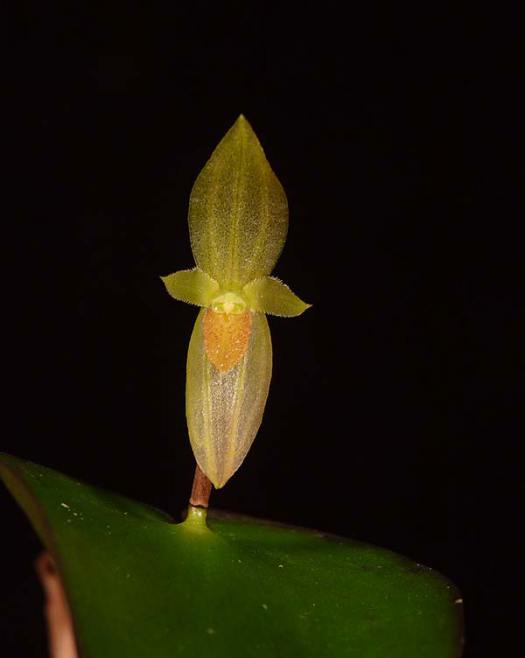 |
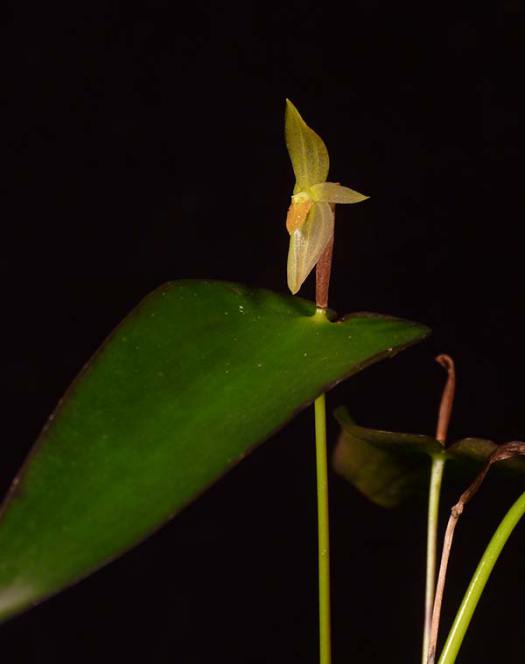 |
Pleurothallis radulaThese perky little flowers emerge repeatedly from the same area sticking up from the leaf. |
|
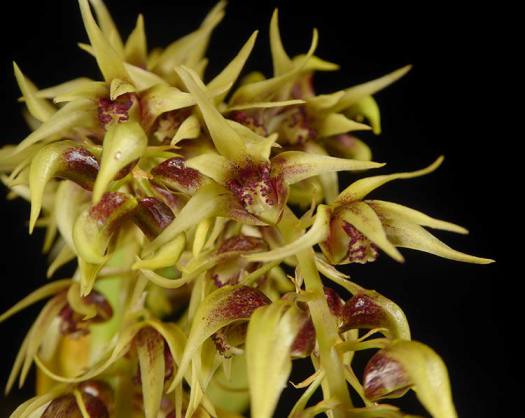
Dendrobium strogylanthumIndividual flowers are about an inch. The brush-like inflorescences emerge from bare canes. I don't particularly dry it out in the winter, but since it is mounted, it dries rapidly after watering. |
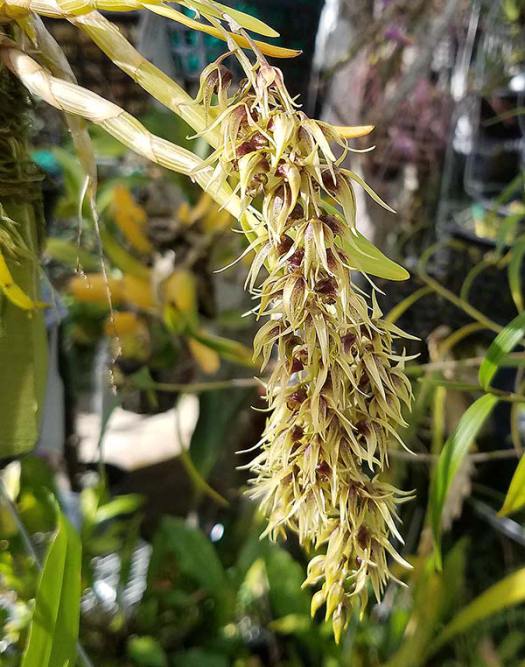 |
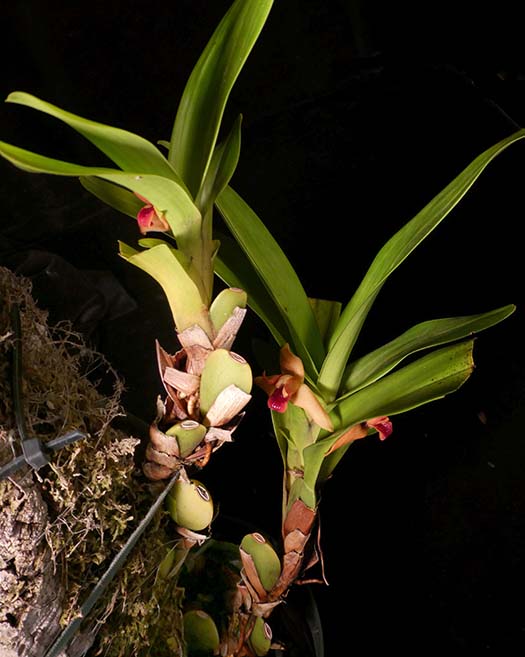
Maxillaria elatiorFlowers with heavy subtance emerge from between the leaves. This species tends to be a climber. Like with other Maxillarias with this habit, it's important not to remove the brown bracts at the base of the pseudobulbs, since they protect an elaborate system of roots . |
|
In the greenhouse... |
|
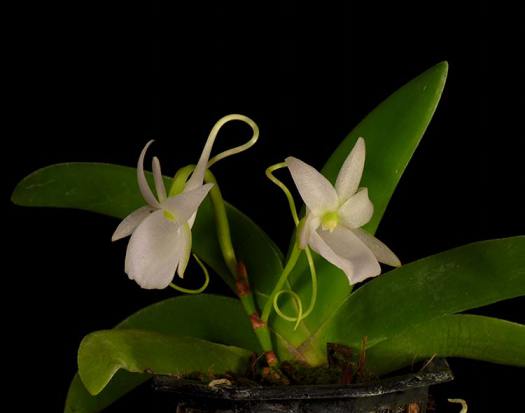 Angraecum leonisThick, succulent leaves are arranged in a fan. Flower is fragrant at night. The spur has an intriguing twist. |
|
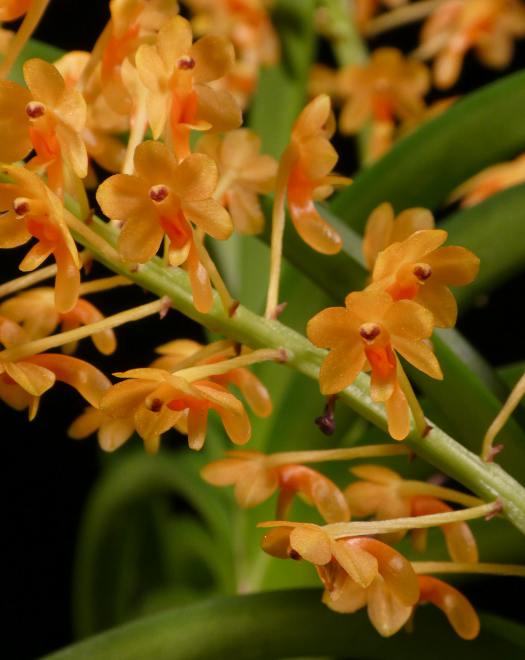 |
|
Ascocentrum garayiClosely related to Ascocentrum miniatum. It possibly could grow outside, it grew in an unheated greenhouse at Pat Rowland's in Garden Grove so it got a little bit of protection from cold. My coastal climate is a little more temperate than inland, but it does respond well to the extra warmth that it gets in the greenhouse. |
|
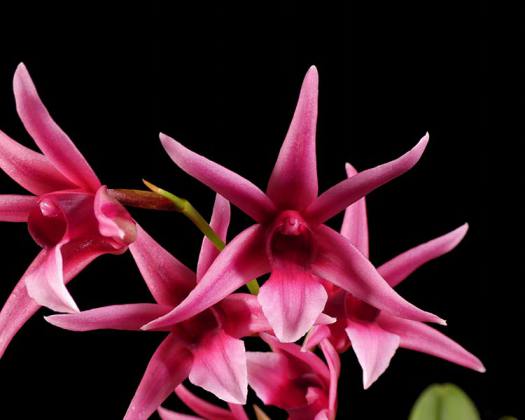 Dendrobium (Epigeneium) treacherianumFlowers have heavy substance, and are large for the genus. I have seen photos of specimen plants - this one has a way to go, but this is the first time that it has bloomed in my care. Epigeneium is related to Dendrobium, and has been lumped into that very large genus. To me, it's quite different, I'm not changing my tags. |
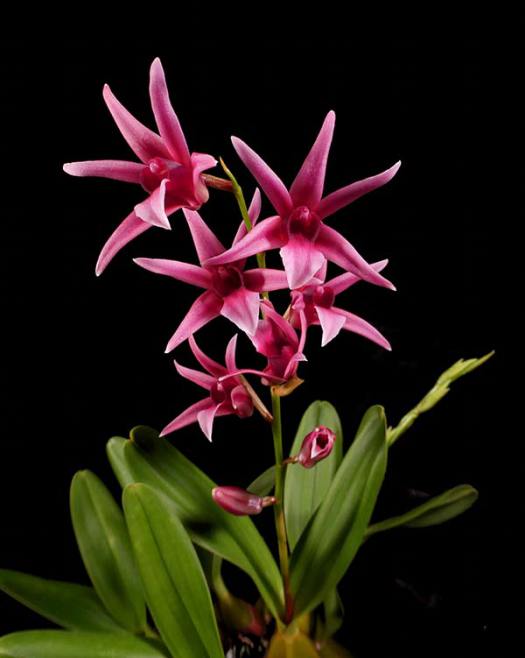 |
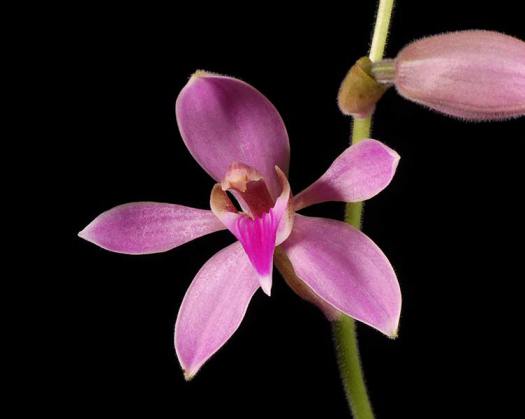 Ancistrochilus rothschildianusThe species is native to a wide area of west and cenral Africa at a range of elevations. It is related to Calanthe. With the size of its range, it is very possible that it could grow outside. If I had two of them I'd experiment... but this one is doing nicely in the greenhouse and I don't want to take any chances with it. |
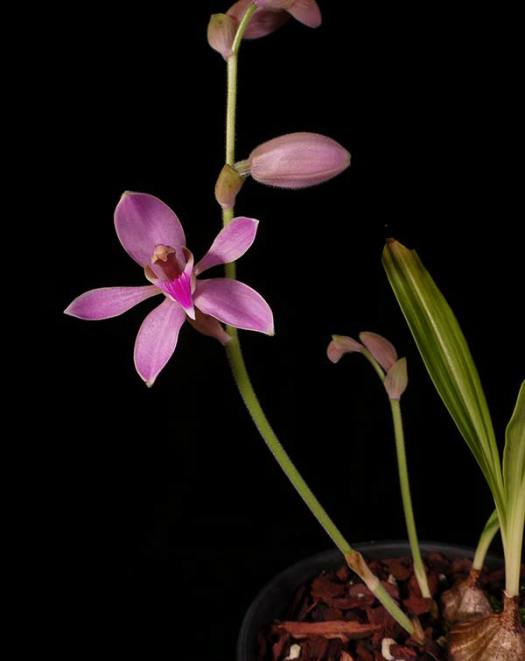 |
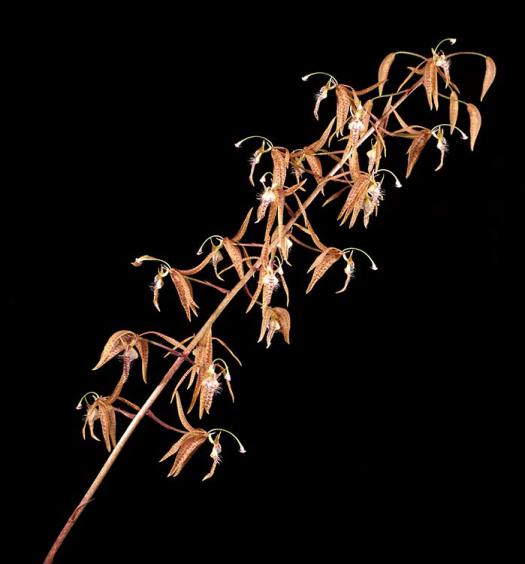 Polycycnis musciferaNative to Colombia, Ecuador, Bolivia and Peru, from elevations of around 1000 m, so marginal with respect to cold-tolerance. I acquired another plant of this species at a San Diego County Orchid Society Conservation Committee sale, that had been grown outside. It had gone completely deciduous... as the summer progressed, a new growth developed, but as nights became cooler in the fall, it seemed to stall so it moved into the greenhouse where it started to grow rapidly. Conclusion... it's better off on the warm side. |
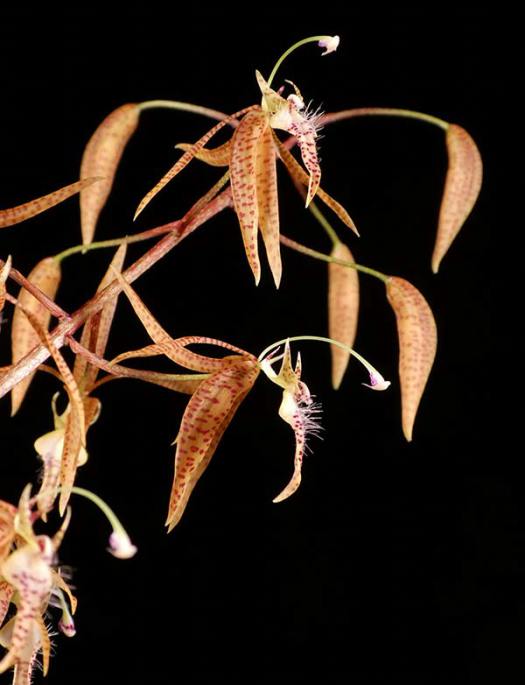 |
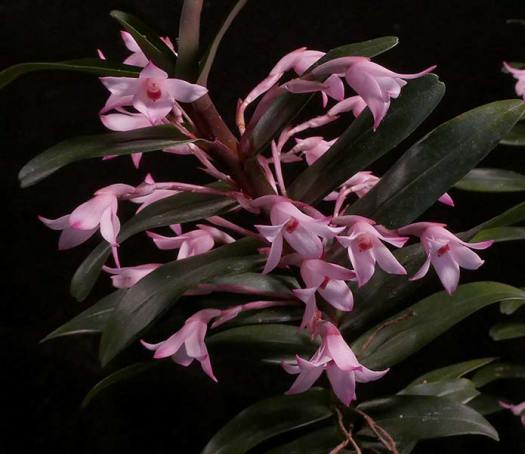
Maxillaria scalariformisAndy Phillips grows this outside very successfully in Encinitas, but I have had several of them die of crown rot during the winter. I have not been able to figure out what is different about where he grows them and the environment in my yard. It is native to fairly low elevations in Panema, so I move it to the greenouse for the winter and both of these plants have grown very well that way. They spend spring, summer and fall outside, and bloom better than when kept in the greenhouse all the time. This flush bloom occurred about a month after moving to the greenhouse. |
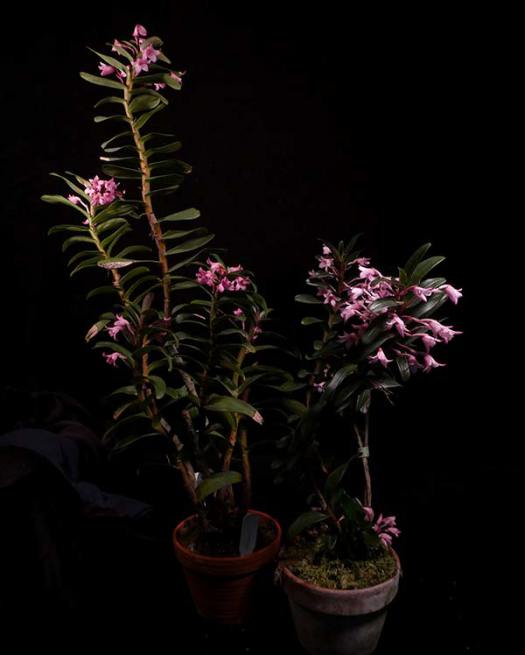 |
